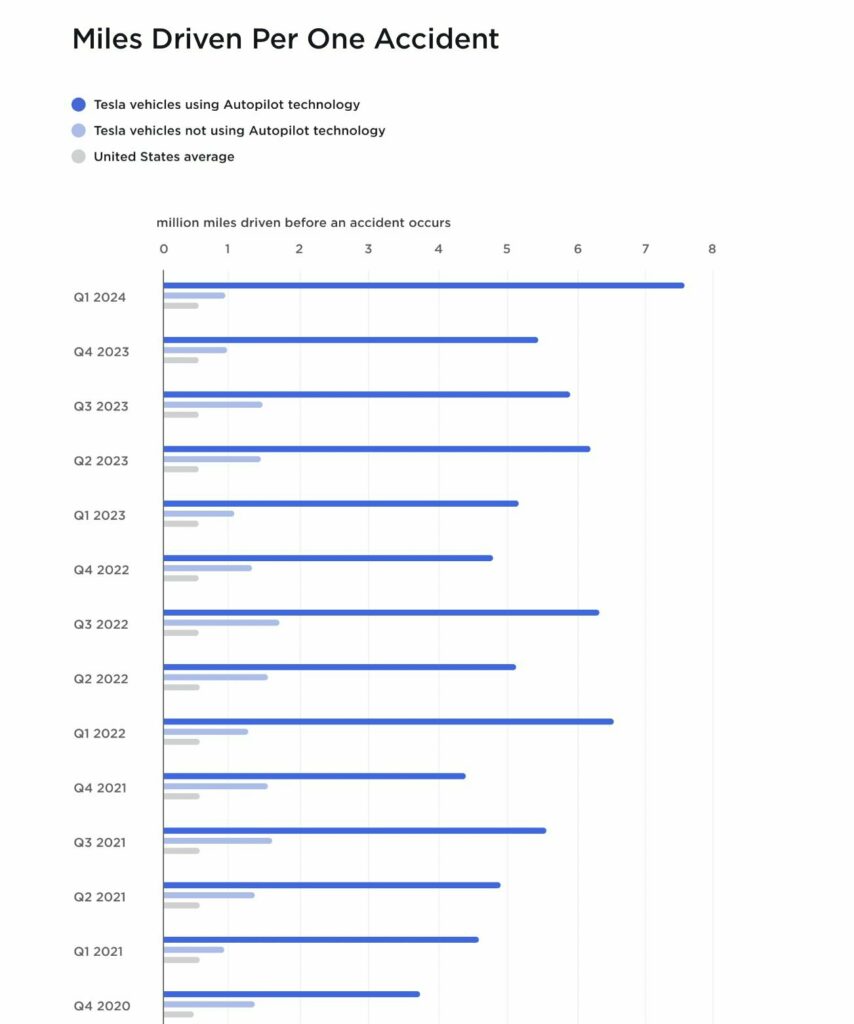- After more than a year Tesla has released updated safety data including accidents on Autopilot.
- It indicates that Tesla vehicles are generally safer and several times safer when Autopilot is engaged.
- At the same time, the data metric isn’t a perfect measure of actual safety.
Discussions about Tesla and its safety record draw in opinions from both sides of the debate. In part, that’s due to very little data on the reality that lies in the middle. Now, after more than a year without updates as the last one was for Q4 2022, Tesla has released its latest public safety data, including statistics on owners who have activated Autopilot.
They appear to indicate good things for the automaker, but a deeper dive tells us more.
More: Tesla Driver Reportedly On FSD Dodges Train By Taking Control At The Last Second
Before we delve further, it’s important to note that Autopilot encompasses cruise control and software designed to assist drivers in maintaining their vehicle within the lane. Additionally, the data presented does not appear to include users with Full Self-Driving (FSD), which is a more advanced version of Autopilot that’s labeled as “beta”.
The data comes from Tesla’s internal documentation and not from a third party. While that raises concerns about bias, it’s worth noting that most brands don’t release this type of data at all. What it purports to show in Tesla’s case is that drivers and occupants are safer than in the average vehicle. It claims this based on miles traveled per accident.
Here’s how Tesla explains it for the first quarter of 2024:
“In the 1st quarter, we recorded one crash for every 7.63 million miles driven in which drivers were using Autopilot technology. For drivers who were not using Autopilot technology, we recorded one crash for every 955,000 miles driven. By comparison, the most recent data available from NHTSA and FHWA (from 2022) shows that in the United States there was an automobile crash approximately every 670,000 miles.”
Dating back through all of 2023, the lowest number of miles driven between accidents on Autopilot was 5.18 million Tesla says. For Tesla drivers not on Autopilot the lowest figure was 1 million miles. Those stats indicate a marked safety improvement when simply compared directly to one another. In fact, it’s possible that Tesla’s figures are overly conservative to a degree.

It says that it counts Autopilot accidents when the system is deactivated within five seconds of a crash. It also doesn’t discriminate based on fault so several of the crashes (Tesla says over 35 percent) recorded are ones where a Tesla driver was rear-ended. At the same time, there’s more to consider.
It’s worth noting that miles driven between accidents isn’t a perfect safety metric on its own. For example, the data Tesla lists as the national average in non-Tesla vehicles includes miles on every type of road. Tesla drivers most often engage Autopilot on highways where the road and traffic are typically more predictable. None of this gives us insight into how Tesla’s “Full Self Driving” or FSD system does either.
Still, these are positive figures that may indicate a material safety benefit to Tesla owners and occupants. Ultimately though, more data, especially independent third-party data, is required to get a true sense of vehicle safety across different brands.




